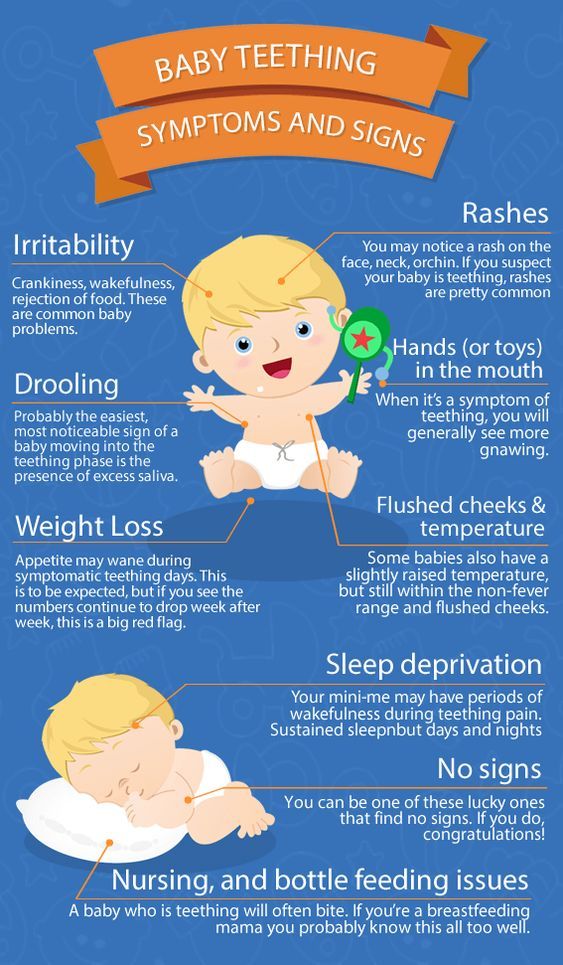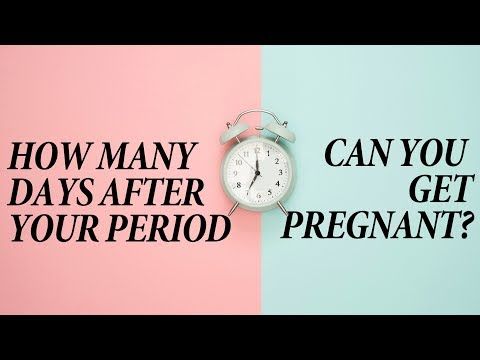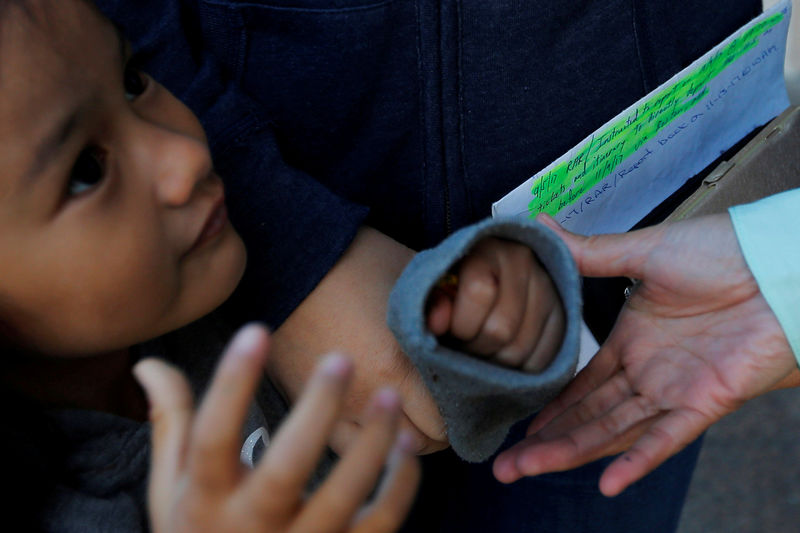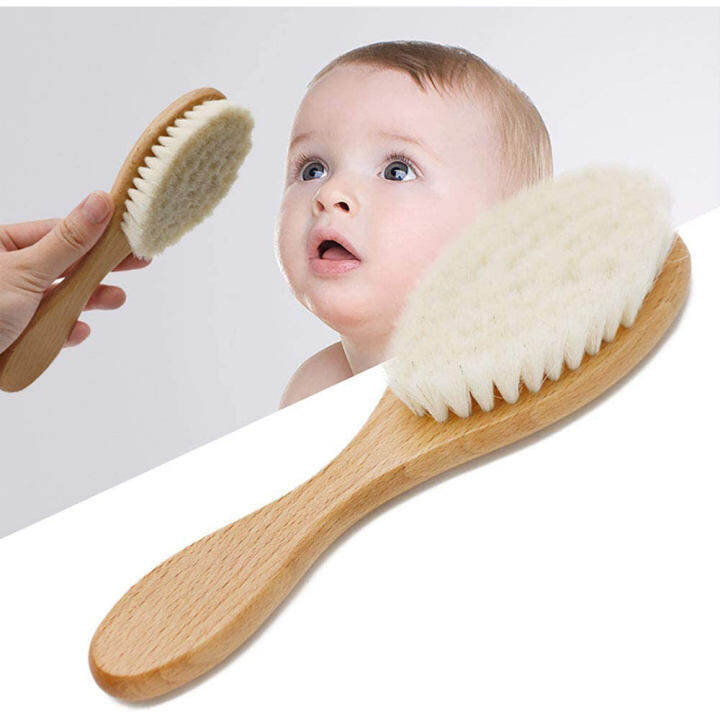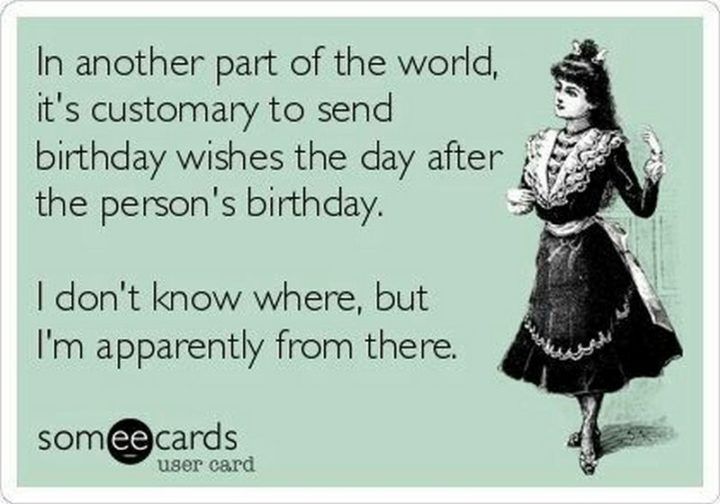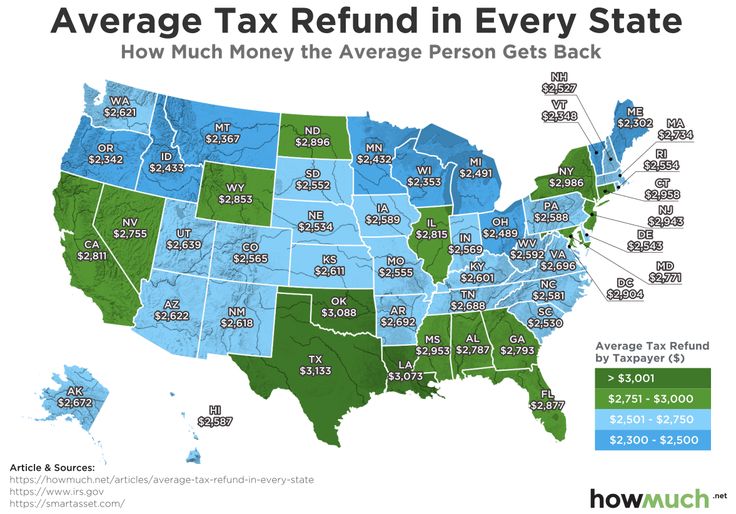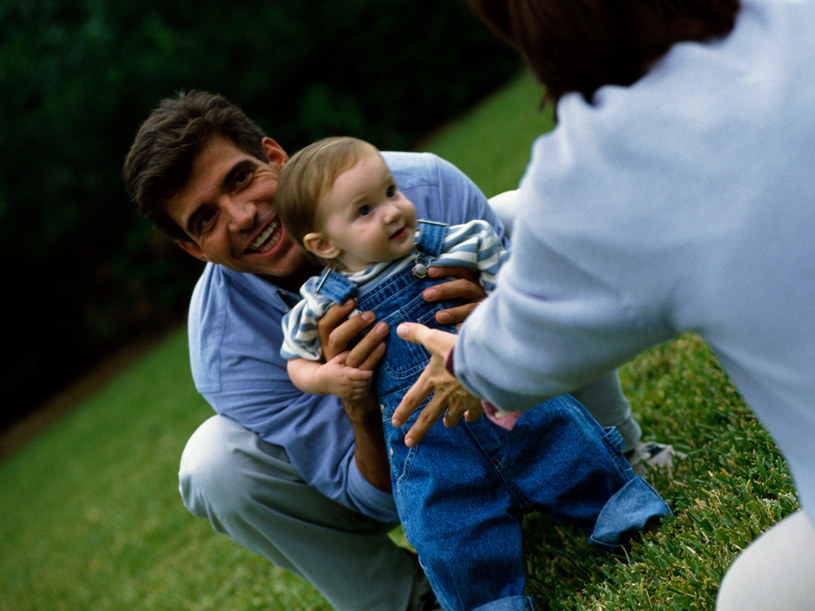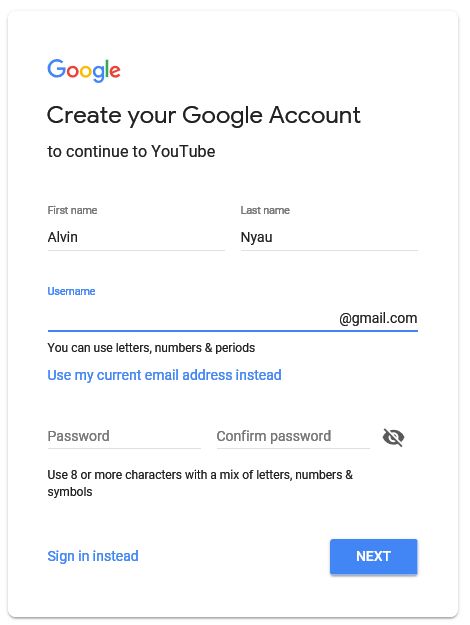What to do when teething
8 Baby Teething Comfort Tips Every Parent Needs to Know
Your newborn baby is born with 20 teeth under the gum line. Before you know it, your happy baby starts to become fussy with a tendency to drool on a consistent basis. The first tooth usually appears between 6 months and 1 year of age.
When your infant starts teething, it can be a very challenging time. However, there are number of baby teething tips to help soothe your child!
Signs Your Baby is TeethingIf your baby is around 6 months (timing does vary), you may start noticing these symptoms of teething:
- Sore or tender gums
- Drooling
- Irritability
- Low-grade fever around 99 F
- Chewing
- Diarrhea
- Drool rash around the mouth
Teething does not cause fevers and diarrhea. If your baby has a temperature above 100.4 F and has diarrhea, you should definitely speak to your doctor.
Typically, the first tooth to appear is one of the incisors on the bottom. It is a good idea to inspect your child’s gums for any bumps, a sign of newly surfacing teeth. Teething may be slower for some babies than others, so infants can have symptoms months before a tooth actually appears.
There are several ways to soothe gums. The most effective treatments include pressure, using cold items, and giving your baby something safe to chew. It’s really tough to see your baby start teething and experiencing constant pain, so try these methods to help ease the discomfort.
1. Massage the Gums
Applying pressure to your infant’s gums may help ease the pain. After thoroughly cleaning your hands, lay your baby on the bed and massage their gums gently with your finger. This may actually help your baby relax and fall asleep. You can try rubbing the gums again if your baby awakes in the middle of the night.
2. Get a Cold Washcloth
It is a good idea to find a clean washcloth and soak it in water. You should wring out the water until it is damp.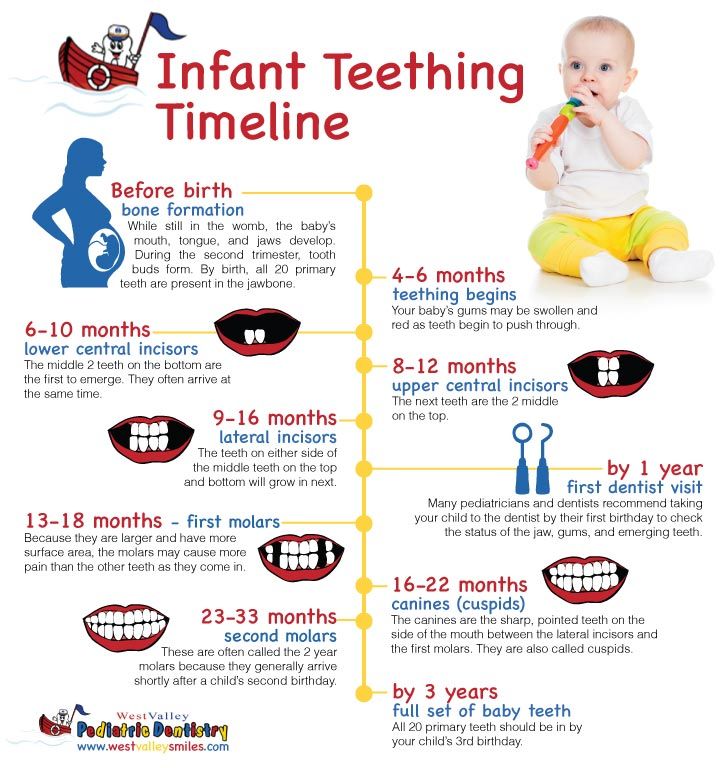 Then place the washcloth in the fridge or freezer to cool it down.
Then place the washcloth in the fridge or freezer to cool it down.
After it is nice and cool, fold the washcloth and give to your baby to chew. You should never leave your baby unattended if they are chewing on something, even a washcloth, because this could be a choking hazard.
3. Refrigerate Pacifier or Teething Toy
If your baby uses a pacifier, you can also use it to soothe their gums by cooling it down. You should make sure the pacifier is clean and place it in the refrigerator. The coolness may help numb the gums and relieve some pain.
You can follow the same steps with teething toys. You can place any solid teething toys in the fridge. It is a good idea to stay away from liquid or gel-filled toys, which could possibly leak.
4. Freeze Milk Popsicles
Some babies will not eat while they are teething. This is most likely because of the discomfort.
If possible, you should find BPA-free popsicle forms and fill them with breastmilk or formula.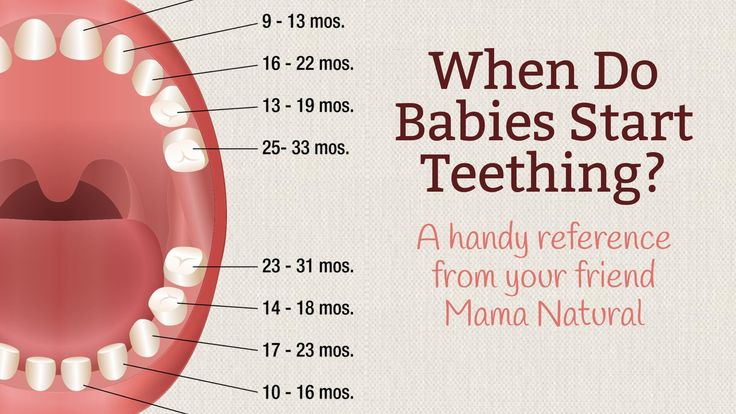 These types of popsicles can become very messy when they melt, so be sure to place a bib on your baby. You might find it smart to have your infant eat these in the highchair.
These types of popsicles can become very messy when they melt, so be sure to place a bib on your baby. You might find it smart to have your infant eat these in the highchair.
5. Wipe Away Excess Drool
It is helpful to have your baby wear a bib while they teethe. Babies have a tendency to drool and soak their clothing.
You should make it a priority to wipe away drool from your baby’s face to help prevent further irritation. Ideally, your child’s face should stay dry to prevent a rash.
6. Chill Some Fruit
If you have introduced your baby to solid foods, you could try freezing some types of foods to help soothe irritated gums. Chilled mashed bananas are a great start! You can try other fruits in a mesh feeder for your baby to suck on. The mesh feeder will help prevent choking. Some different types of fruit you could try include chilled apples, pears, or strawberries. It is a good idea to monitor your baby at all times and make sure your infant is old enough to try these treats.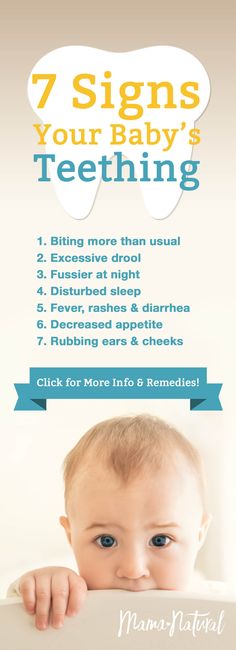
7. Extra Cuddling Time
Sometimes the best way to help a baby in discomfort is some extra cuddle time. Rocking your baby in a big chair or carrying your baby around the house (in a baby carrier) are great ideas. The extra cuddle time will help provide both of you with some needed rest.
If you breastfeed, don’t be afraid to give your baby additional nursing sessions for comfort. It is important to provide your infant with a calm environment to help them relax and fall asleep.
8. Pain Medications
As a last resort, you can talk to your doctor about providing over-the-counter pain medication. These medicines help alleviate pain and allow the baby to go to sleep. Your pediatrician can advise you on the correct dosage and which type of pain relievers work best.
It is a good idea to stay away from teething gels and tablets that contain lidocaine or benzocaine. They can be harmful and often numb a baby’s mouth, causing issues with swallowing.
There is no set timetable on how long your baby will go through teething. This process could last months or be over in a couple of days. Each infant handles the pain differently. The pain typically subsides once the tooth has emerged through the gums. There is usually a break between teeth, although the time frame can vary.
Caring for Your Baby’s New TeethYou should start caring for your baby’s tooth as soon as it appears through the gums. It is important to wipe off the tooth before bed. You can use a damp, clean washcloth or a soft-bristled baby toothbrush.
You should not use fluoride toothpaste until your child is at least 3 years old and can spit out the toothpaste. However, you can use a small amount of training toothpaste to clean the new tooth.
Good hygiene starts early. Even though your baby will ultimately lose these teeth, you want the baby teeth and gums to remain healthy in preparation for the new adult teeth.
Baby teething is no fun for the baby or the parent. Now you have valuable suggestions on how to help your baby deal with the irritation.
Once that first tooth appears, the American Dental Association recommends scheduling your child’s first dental visit. Regular dental visits set the foundation for your child to have healthy gums and teeth. Contact our office with any questions or to schedule your child’s first appointment today!
Tips for helping your teething baby
Teething can be distressing for some babies, but there are ways to make it easier for them.
Every baby is different, and you may have to try a few different things until you find something that works for your baby.
Teething ringsTeething rings give your baby something to chew safely.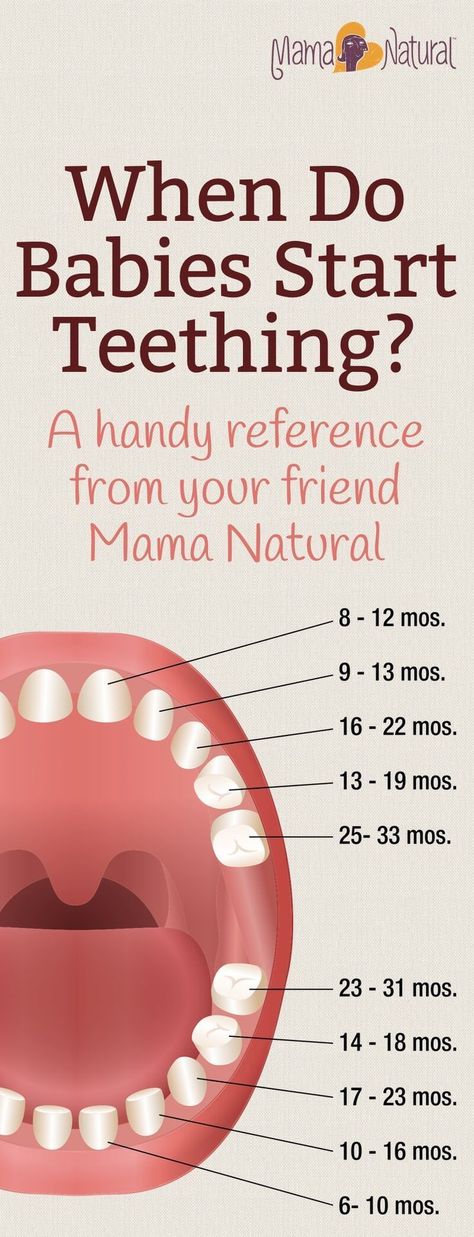 This may ease their discomfort and distract them from any pain.
This may ease their discomfort and distract them from any pain.
Some teething rings can be cooled first in the fridge, which may help to soothe your baby's gums.
The instructions that come with the ring should tell you how long to chill it for.
Never put a teething ring in the freezer, as it could damage your baby's gums if it gets frozen.
Never tie a teething ring around your baby's neck, as it may be a choking hazard.
If your baby is chewingOne of the signs that your baby is teething is that they start to chew on their fingers, toys or other objects they get hold of.
If your baby is 6 months or older, you can give them healthy things to chew on, such as raw fruit and vegetables. Soft fruit like melon can soothe gums.
You could also try giving your baby a crust of bread or a breadstick.
Always watch when your baby is eating in case they choke.
Find out what to do if your baby starts choking
It's best to avoid rusks because nearly all brands contain some sugar.
Avoid any foods that contain lots of sugar, as this can cause tooth decay, even if your child only has a few teeth.
Teething gelsThere's a lack of evidence that teething gels are effective. It's recommended that parents try non-medical options for teething first, such as a teething ring.
If you do decide to use a gel, make sure you use a teething gel that's specially designed for young children.
General oral pain relief gels are not suitable for children.
Teething gels contain a mild local anaesthetic and are only available from pharmacies.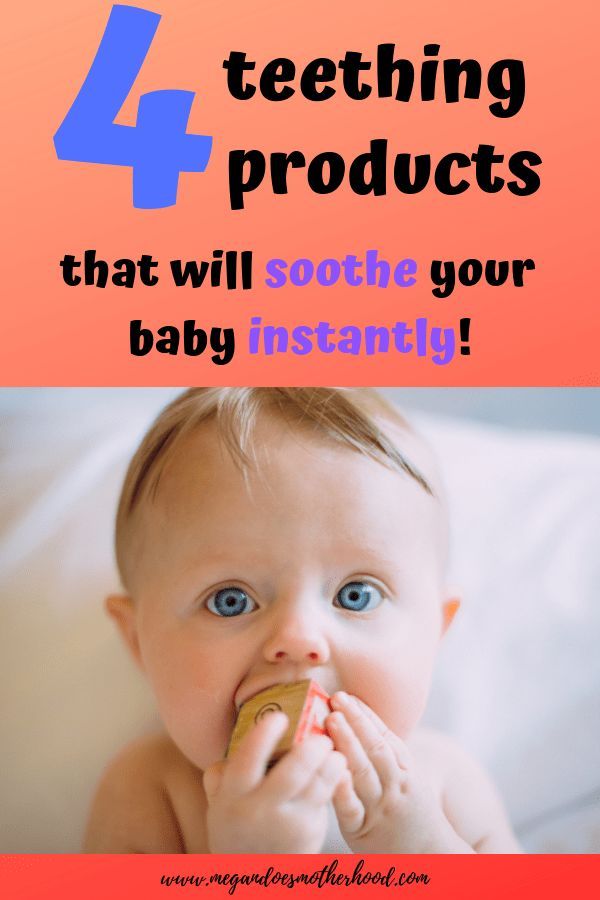 Speak to a pharmacist for further advice.
Speak to a pharmacist for further advice.
There's no evidence that homeopathic teething gels are effective. If you use a homeopathic gel, make sure it's licensed for use in the UK.
Some unlicensed homeopathic gels advertised on the internet have been linked to serious side effects.
The Medicines and Healthcare products Regulatory Agency has a list of licensed homeopathic gels.
Paracetamol and ibuprofen for teethingIf your baby is in pain, you may want to give them a sugar-free painkilling medicine.
Paracetamol or ibuprofen can be given to relieve teething symptoms in babies and young children aged 3 months or older.
Children under 16 years old should not have aspirin.
Always follow the instructions that come with the medicine.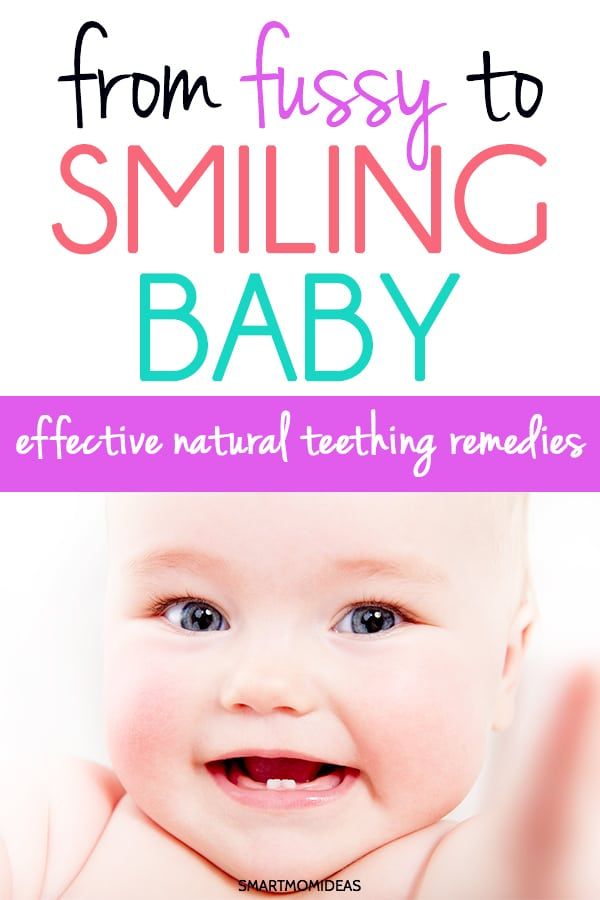
If you're not sure, speak to your GP or pharmacist.
Comforting a teething babyComforting or playing with your baby can distract them from any pain in their gums.
Gently rubbing their gums with a clean finger may also help.
Preventing teething rashesIf teething is making your baby dribble more than usual, gently wiping their face may help prevent a rash.
Caring for your baby's new teethYou'll need to register your baby with a dentist when their teeth start coming through.
Find a dentist near you
Start brushing your baby's teeth with fluoride toothpaste as soon as their first milk tooth breaks through.
Find out how to look after your baby's teeth
Page last reviewed: 17 March 2022
Next review due: 17 March 2025
How to relieve the pain of teething in a child
What is teething?
When teething in infants and children, the growing teeth begin to penetrate the underlying gum tissue and come out.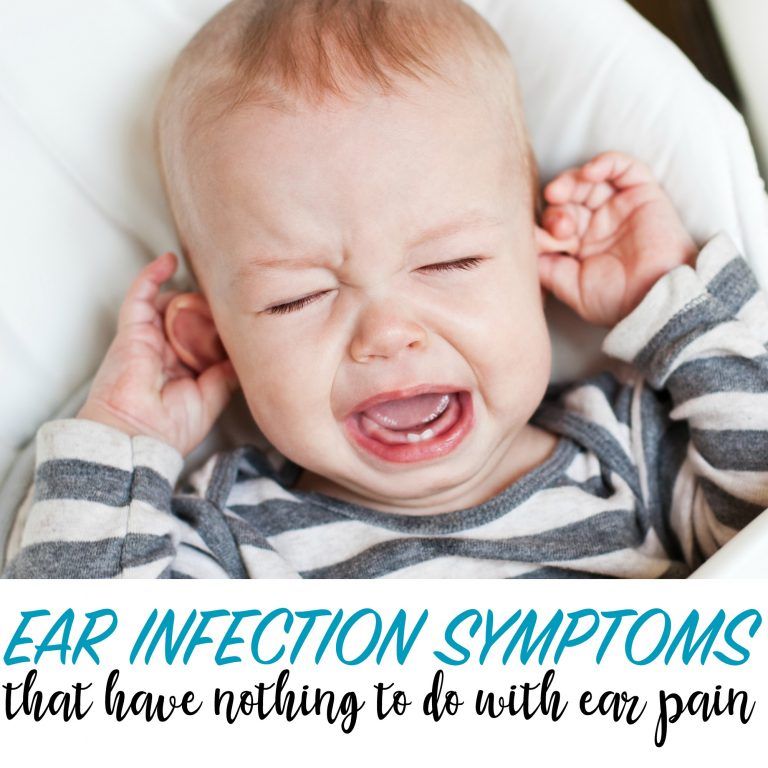 Some children experience more severe pain, others less. Here are some signs and symptoms that can tell if your baby is teething:
Some children experience more severe pain, others less. Here are some signs and symptoms that can tell if your baby is teething:
- The gums at the expected teething site become inflamed and swollen.
- The baby's cheek on the teething side may be red and hot.
- Children may constantly rub their ear on the side of teething.
- The child begins to chew everything that comes to hand.
- Increased salivation, which may cause irritation on the chin.
- The child becomes irritable and shows other signs of discomfort such as restless sleep and refusal to eat.
- At this time, children may periodically have a slight jump in temperature.
What is the average teething time for children?
The first tooth usually appears between 6 months and 1 year of age.
A baby is born with all 20 baby teeth already under the gum just waiting to erupt. And there is a clear pattern or order of teething. The front teeth (incisors) usually erupt first, and all subsequent teeth, upper and lower, appear one by one. The first molars at the end of the gums begin to appear around the age of 12-15 months, while the canines usually erupt by the age of one and a half years. All milk teeth usually appear by the age of three.
The front teeth (incisors) usually erupt first, and all subsequent teeth, upper and lower, appear one by one. The first molars at the end of the gums begin to appear around the age of 12-15 months, while the canines usually erupt by the age of one and a half years. All milk teeth usually appear by the age of three.
How to soothe the pain of teething
There are several ways to help your baby with teething so that this difficult period of his life is comfortable:
Chewing toys
You can purchase special chewing rings of a variety of shapes and materials designed for your baby in this period. These rings help to significantly reduce the discomfort in the child and help in the speedy appearance of the tooth.
You can also use chew toys (made from a special soft fabric) and various baby bottle nipples.
Proper nutrition
Cool water is the best option during teething, especially if the child drinks from a special baby cup. Drinking a chilled drink will somewhat soothe irritated and inflamed gums in the same way as drinking fruit purees or drinking yogurts in a cool form.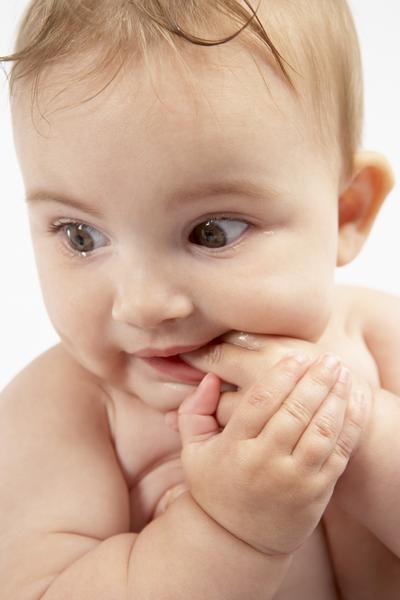
Creative distraction or special play
Try to distract your child with some creative activity from discomfort and pain in the mouth. Hug him, play with him, prepare a warm bath for him. If your baby is still breastfeeding, feed him.
Gum massage
If you gently massage your baby's gums with a clean finger, the pain will subside a little. It can also help the tooth erupt.
Skin protection
You can use a baby cream to reduce irritation of the chin skin. It is also necessary to change the bed linen of the child in a timely manner.
Dental gels
These preparations are available from many pharmaceutical companies. They may contain local anesthetic ingredients. Gels give a temporary result, as they are easily washed off with saliva.
Baby tooth gels contain ingredients with a high safety profile, some of which can be used as early as 5 months of age. It is recommended to follow the instructions for use and use only drugs that are registered for children of the appropriate age.
Medications
If your child has severe pain or fever, you can give him a children's medicine for such cases, which can help reduce fever and pain.
Seek medical attention if your child has a high fever, an unusually uncomfortable or painful condition that suggests more serious problems than teething symptoms.
Finally, don't forget that all children teeth naturally, so don't take your child's painful illnesses to heart at this difficult time for him (and his family).
How to help a child with teething
The appearance of a newborn in the family is an indescribable joy. Great relief comes when the period of infantile colic passes. And as soon as moms and dads relax and begin to enjoy life, a new problem appears - teething. And it all starts over...
In order to somehow help their baby, parents are ready to do anything: buy, put on teeth, cover up, drip, etc. During this period, advertising on TV fits very “successfully” - “Drops when teething”.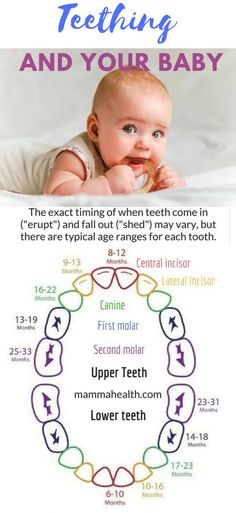 Parents run to the pharmacy, give a miracle drug to the child, but there is no result. Another advertisement is "Teething Gels". More like a pharmacy. And there was no result, and no.
Parents run to the pharmacy, give a miracle drug to the child, but there is no result. Another advertisement is "Teething Gels". More like a pharmacy. And there was no result, and no.
STOP! In this situation, you need to stop. Remember that people lived on the planet a long time ago. And children constantly face teething. Yes, sometimes it brings discomfort, both to the baby and to his whole family. But that's completely normal! You should be a little patient and you can forget about teething, like a bad dream.
Teething medicines
The first thing parents think about when faced with the problem of teething is how to help the baby? What funds to buy at the pharmacy? Let's deal with all their diversity.
Local anesthetic gels
There are currently 2 painkillers found in dental gels: benzocaine and lidocaine.
1. Benzocaine.
Benzocaine has been banned from use by the US Food and Drug Administration (FDA). The reason for the ban is toxicity and lack of safety.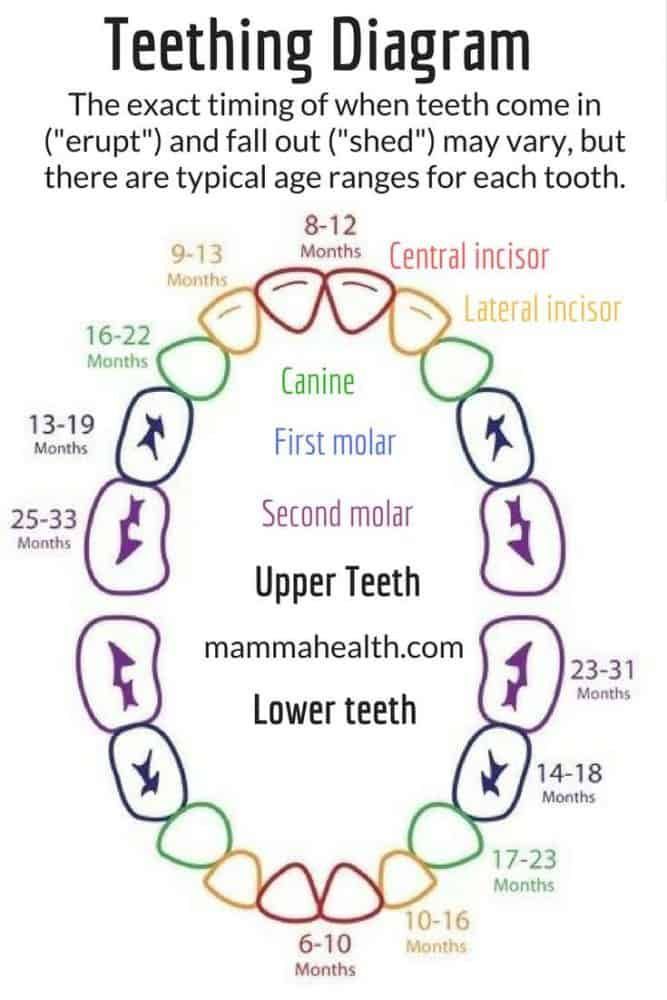 Benzocaine products can cause methemoglobinemia, the main symptoms of which are gray-brown skin, lips and nails, headache, shortness of breath, tachycardia, nausea, and even death.
Benzocaine products can cause methemoglobinemia, the main symptoms of which are gray-brown skin, lips and nails, headache, shortness of breath, tachycardia, nausea, and even death.
These symptoms may appear minutes or hours after the use of benzocaine.
2. Lidocaine.
This drug can cause numbness in the throat and, consequently, a violation of the function of swallowing. If the dosage is not observed, there are violations of the cardiovascular system, convulsions, allergic reactions, anaphylactic shock and death.
Since 2014, lidocaine has been banned for use in children's teething by the US FDA.
Homeopathic gels
There seems to be nothing wrong with homeopathy - after all, there is no active substance in such preparations. And if children become calmer after them, then we can remember the placebo effect. They smeared the gums - the parents calmed down - the child calmed down.
However, there is still a catch.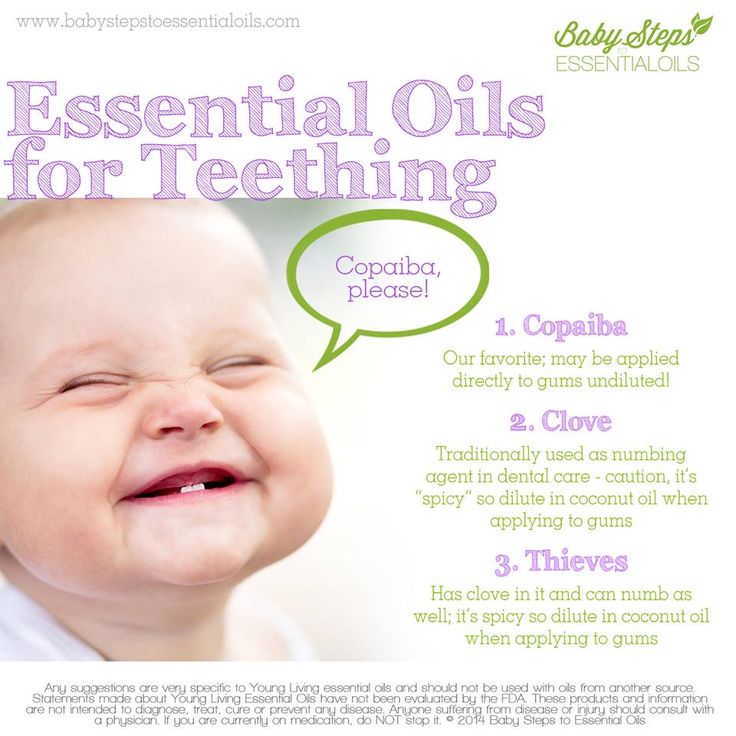 In 2016, a number of homeopathic dental medicines were recalled due to the discovery of a toxic concentration of belladonna in these products. As a result of the use of these drugs in children, convulsions, difficulty breathing, and lethargy occurred.
In 2016, a number of homeopathic dental medicines were recalled due to the discovery of a toxic concentration of belladonna in these products. As a result of the use of these drugs in children, convulsions, difficulty breathing, and lethargy occurred.
Herbal gels and anti-inflammatories
Theoretically, these drugs can be used, but we should not forget that they can be washed out of the oral cavity after a few minutes. From this it is clear that the effect of them will not last long at all and the child will begin to cry again. In this case, you need to remember about the likelihood of allergic reactions and individual intolerance.
What then to smear?
Nothing. The American and Canadian Dental Associations do not recommend any gels for use in children during teething.
How parents can help their child:
1. Give your child pre-chilled rubber or silicone teethers. If they contain liquid inside, they must be cooled in the refrigerator and not in the freezer.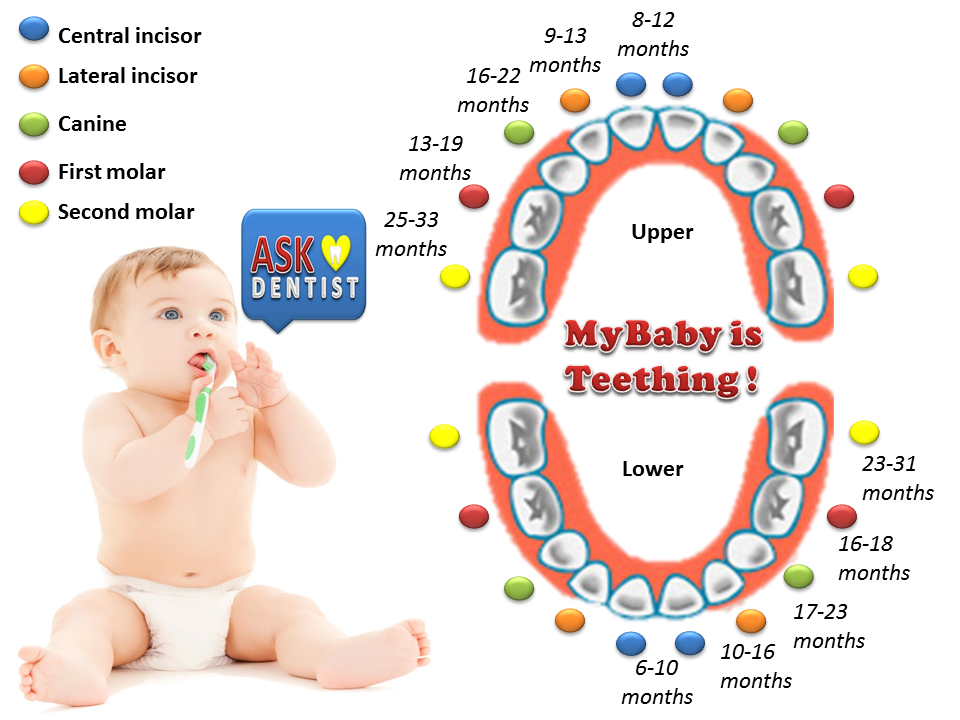 When cleaning teethers, do not boil them, as high temperatures can damage the plastic.
When cleaning teethers, do not boil them, as high temperatures can damage the plastic.
2. Offer your baby teething toys with a ribbed silicone or latex surface.
3. If the child has already learned to eat solid food, offer him chilled pieces of fruits and vegetables, as well as dried ones. This is a good way to distract the child from pain. The main thing is to be at this time next to the child and make sure that he does not choke.
4. Offer the breast more often (when breastfeeding). The baby calms down thanks to the action of several factors at once: massage of the gums, closeness to the mother and the calming effect of the milk itself.
5. Give chilled water from a cup or bottle (suitable for children over 6 months old).
6. Massage the gums of the crumbs with clean fingers or special silicone fingertips.
7. Just be there during this difficult period, hug, hold, stroke and try to distract more often.
8. In case of severe pain, give the baby painkillers (you need to consult a pediatrician!).